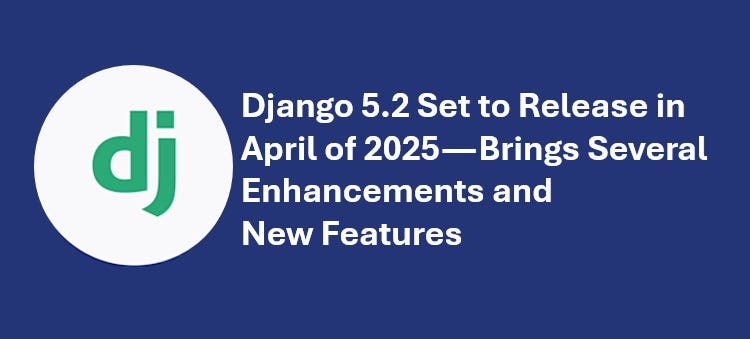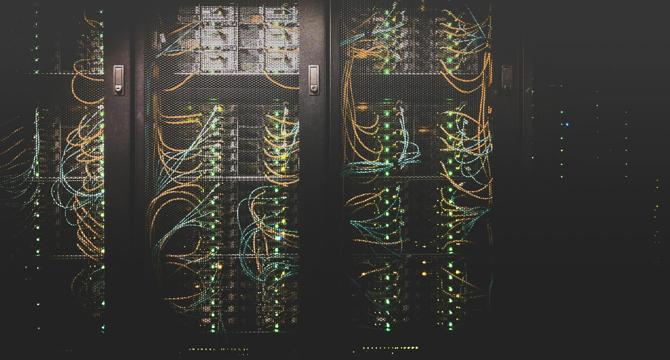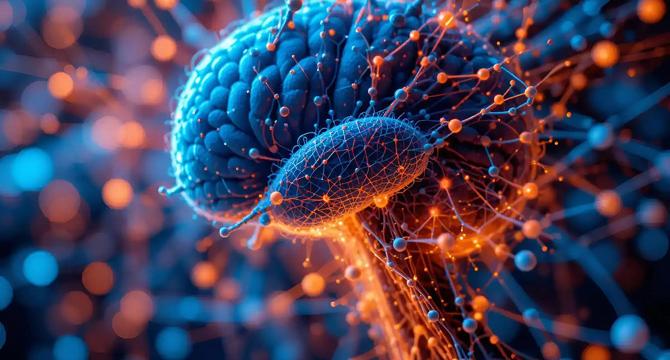Data Science News
Medium
127

Image Credit: Medium
Data as a Product: The Future of Data-Driven Decision Making
- Data as a Product is a paradigm shift in how organizations think about data.
- Data should be actively managed, curated, and packaged to meet the needs of users.
- Treating data as a product enables better decision-making and empowers business users.
- Product managers play a central role in overseeing the development and delivery of data products.
Read Full Article
7 Likes
Medium
232

Image Credit: Medium
SQL Injection: How to Outsmart Hackers and Keep Your Website Safe
- SQL injection is a crafty technique used by attackers to manipulate databases.
- It allows attackers to inject malicious SQL code into input fields and alter a website's database behavior.
- With databases storing sensitive user data, the risks of SQL injection are significant.
- Implementing proper security measures is crucial to prevent SQL injection attacks.
Read Full Article
14 Likes
Analyticsindiamag
0

Image Credit: Analyticsindiamag
The IPO Landscape of India is The Most Active in the World
- India's IPO market is one of the most dynamic in the world, supported by a growing startup ecosystem, government policies, and investor confidence.
- Small and Medium Enterprise (SME) IPOs are democratizing access to capital for smaller businesses and promoting their growth.
- The number of IPOs in India has been consistently rising, with a significant increase in 2024 and 2025, driven by the influx of startups raising significant funds.
- India leads globally in IPO activity, accounting for a 23% share of total listings.
Read Full Article
Like
Analyticsindiamag
260

Image Credit: Analyticsindiamag
EXL Unveils EXLerate.AI, Open and Cloud Agnostic Agentic AI Platform for Enterprise
- EXL has launched EXLerate.AI, an agentic AI platform for enterprises.
- The platform aims to enhance efficiency, accuracy, and scalability in integrating generative AI.
- EXLerate.AI supports rapid implementation across diverse enterprise environments and features over 10 industry-specific AI agents.
- The platform allows businesses to incorporate third-party AI agents, internal AI models, and existing digital systems.
Read Full Article
15 Likes
Analyticsindiamag
287

Image Credit: Analyticsindiamag
Baidu Completes Acquisition of JOYY’s YY Live Video Streaming Service for $2.1 Billion
- Baidu has completed the acquisition of JOYY's YY Live video streaming service for $2.1 billion.
- The acquisition closed after Baidu paid approximately $240 million, bringing the total purchase price to $2.1 billion in cash.
- The deal was initially valued at $3.6 billion in 2020, but faced regulatory challenges.
- Baidu aims to diversify its revenue and compete with online entertainment giants like Douyin and ByteDance.
Read Full Article
17 Likes
Medium
351

5 Key Lessons I Wish I Knew Before Building AI Projects
- Data quality is crucial for building accurate AI models. Relevant and clean data are essential for optimal performance.
- Balancing AI model accuracy and explainability is important. Transparency promotes trust, but too much transparency may raise ethical concerns.
- Consider compute resources when training AI models. Well-optimized and smaller models can perform equally well as large ones.
- Deployment is a challenge in real-world applications. APIs, containerization, optimization, and scaling are necessary for deploying AI models.
- A well-designed user interface is crucial for AI applications. Frameworks like Streamlit can enhance the user experience.
Read Full Article
21 Likes
Appsilon
388

Image Credit: Appsilon
Building LLM-Powered Applications with Shiny for Python: Practical Insights
- At Appsilon, Large Language Models (LLMs) have been integrated into Shiny for Python applications, with the challenge lying in building applications that can evolve with needs.
- Key architectural insights are shared to structure projects efficiently for future iterations, focusing on maintainability and flexibility.
- The importance of separating LLM provider logic, enabling testing without APIs through mock classes, and having a structured project layout is highlighted.
- Implementing LLM models using LangChain, OpenAI, or Claude APIs involves strategic decisions, with considerations for structured outputs, response formats, image attachments, and streaming responses.
- Different ways of interacting with LLMs are compared, emphasizing the importance of achieving smooth transitions as projects evolve.
- Real-world integration notes highlight the need for prototyping, handling structured responses, image processing challenges, and transitioning between LLM implementations.
- Lessons learned include creating proofs of concept, designing code for adaptability, and starting projects with Tapyr template for clean separation of concerns.
- Building LLM-powered applications is iterative, emphasizing the significance of creating small proofs of concept and designing code for adaptability.
- The importance of good architecture in enabling applications to adapt to evolving requirements, regardless of the LLM tools used, is stressed.
- Consider using the open-source Tapyr template when starting Shiny for Python projects with LLMs for maintaining a clean separation of concerns.
- For assistance in building robust and scalable LLM applications with Shiny for Python, Appsilon offers support to discuss your projects.
Read Full Article
23 Likes
Analyticsindiamag
4.6k

Image Credit: Analyticsindiamag
Grant Thornton Bharat, Zoho Unite to Boost India’s Mid-Market Enterprises
- Grant Thornton Bharat and Zoho have partnered to enhance digital capabilities for Indian mid-market enterprises.
- The alliance combines Grant Thornton Bharat's industry expertise with Zoho's cloud-based solutions, enabling businesses to navigate their digital journeys more efficiently.
- The partnership aims to provide businesses with expert guidance on financial management, compliance, and strategic growth.
- Initially, the collaboration will focus on the automotive, BFSI, and education sectors, offering tailored solutions for specific business needs.
Read Full Article
10 Likes
Analyticsindiamag
12

Image Credit: Analyticsindiamag
Jobizo Raises $1.4M Pre-Series A, Aims Create 100k Jobs in India
- Healthcare hiring platform Jobizo has raised $1.4 million in pre-Series A funding.
- The company plans to create 100,000 jobs in India and 3,000 jobs abroad within the next 18 months.
- Jobizo has already facilitated over 20,000 job placements and filled more than 10 million job hours.
- The funding will be used for expansion, product enhancements, and bridging the skills gap in the global healthcare sector.
Read Full Article
Like
Medium
22

Image Credit: Medium
Django 5.2 Set to Release in April of 2025 — Brings Several Enhancements and New Features
- Django 5.2 is set to release in April of 2025 and brings several enhancements and new features.
- Django 5.2 will support Python versions 3.10 through 3.13.
- The release offers the flexibility to define a model with a composite primary key for more straightforward customization of form fields.
- Community participation has been instrumental in the development process of Django 5.2.
Read Full Article
1 Like
Analyticsindiamag
424

Image Credit: Analyticsindiamag
Perplexity AI Brings Deep Research to Sonar API, OpenAI Rolls Out New Features
- Perplexity AI has introduced Deep Research, which is now accessible via the Sonar API, allowing developers to create custom research agents.
- Deep Research autonomously conducts in-depth research, performs multiple searches, and compiles comprehensive reports.
- Perplexity AI will host its first developer meetup on March 17 to showcase Sonar API offerings.
- OpenAI expands Deep Research availability to various user tiers and introduces Advanced Voice powered by GPT-4o mini to ChatGPT free users.
Read Full Article
25 Likes
Analyticsindiamag
406

Image Credit: Analyticsindiamag
Adobe Photoshop Now on iPhone, Coming Soon to Android
- Adobe has launched Photoshop on iPhone, with an Android version coming later this year.
- The new mobile app and expanded web experience aim to provide accessible and intuitive interfaces for new and established creators.
- Adobe introduced a new Photoshop Mobile and Web plan for $7.99/month or $69.99/year, offering advanced editing features on mobile.
- The free mobile app provides direct integration with creative apps and access to a vast library of free Adobe Stock assets.
Read Full Article
24 Likes
Analyticsindiamag
189

Image Credit: Analyticsindiamag
CtrlS Datacenters Launches ₹4,000 Crore Data Centre in Chennai
- CtrlS Datacenters inaugurated a new data centre park in Chennai's Ambattur Industrial Estate.
- The facility represents a direct investment of ₹4,000 crore and is expected to attract an indirect investment of ₹50,000 crore.
- The Chennai data centre park features two buildings with a combined IT load capacity of 72 MW, designed to meet global standards.
- Chennai's data centre capacity is projected to double by 2026, and CtrlS Datacenters is considering an IPO as part of its future plans.
Read Full Article
11 Likes
Medium
146

Image Credit: Medium
Neural Networks: The Foundation of Modern Artificial Intelligence
- Neural networks are computational models mimicking human brain neurons, forming the backbone of modern AI and deep learning.
- They consist of layers of interconnected artificial neurons processing data through weighted connections, learning from experience.
- Neural networks operate through forward propagation and backpropagation, adjusting weights to enhance accuracy over time.
- The network comprises input, hidden, and output layers, each with specific functions in data processing and learning.
- Activation functions like sigmoid, ReLU, and softmax introduce non-linearity and aid in learning complex patterns.
- Training algorithms optimize network parameters based on input data, emphasizing the importance of high-quality datasets.
- Feedforward neural networks flow data from input to output without feedback loops, suitable for structured data tasks.
- Convolutional neural networks excel in image processing, utilizing convolutional, pooling, and fully connected layers for pattern recognition.
- Recurrent neural networks specialize in sequential data tasks, addressing time dependencies through recurrent connections.
- LSTMs and GRUs improve upon standard RNNs by handling long-term dependencies more effectively.
Read Full Article
8 Likes
Analyticsindiamag
0

Image Credit: Analyticsindiamag
How CME Group Evolved from a Service Hub to a Thriving CoE in India
- CME Group's India office in Bengaluru has transformed from a service delivery site to a center of excellence.
- The center plays a pivotal role in cloud adoption, risk management solutions, and advanced quantitative research.
- CME Group has a 10-year partnership with Google Cloud, focusing on cloud adoption, co-innovation, and expanded access.
- The Bengaluru office strategically supports the Asia-Pacific region in clearing, risk management, product introductions, and customer portfolio building.
Read Full Article
Like
For uninterrupted reading, download the app